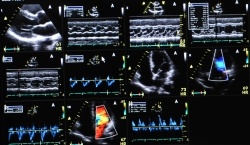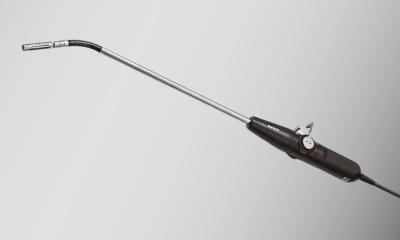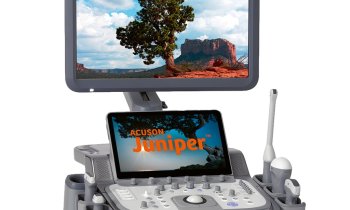Ultrasound most cost effective
In comparing ultrasound with other medical imaging methods such as MRI and CT scans, a literature review of published studies in the May/June issue of Journal of Diagnostic Medical Sonography (JDMS) describes the use of ultrasound to provide an accurate diagnosis more cost effectively than the alternatives.

Since its first uses in the 1950s, ultrasound has been utilized mostly in hospital settings. But with the development of less costly, portable equipment, its use has expanded to doctor's offices, trauma settings, and even to outer space. The article compares the use of ultrasound to magnetic resonance (MR) imaging, computed tomography (CT), contrast angiography (CA), and single-photon emission computed tomography (SPECT).
In addition to evaluating the accuracy and cost effectiveness of ultrasound as compared to other medical imaging techniques, the study reviewed the use of ultrasound in the following applications:
• Obstetric and Gynecological
• Abdominal
• Vascular
• Cardiac
• Emergency
• Disease Diagnosis
"Ultrasound provides the ability to rapidly evaluate and diagnose abnormalities throughout the spectrum of clinical medicine," write the authors S. Michelle Bierig, MPH, RDCS, RDMS, FASE, FSDMS and Anne Jones, RN, BSN, RVT, RDMS, FSVU. "Its accuracy and cost-effectiveness in a variety of applications has led to its widespread adoption and use. The utilization of ultrasound compared to the use of alternative imaging methods leads to increased cost efficiency in the diagnosis and management of patients."
"Accuracy and cost comparison of ultrasound versus alternative imaging modalities including CT, MR, PET and Angiography" in the May/June issue of Journal of Diagnostic Medical Sonography is available free for a limited time at: http://jdm.sagepub.com/cgi/rapidpdf/8756479309336240v1.
27.05.2009











